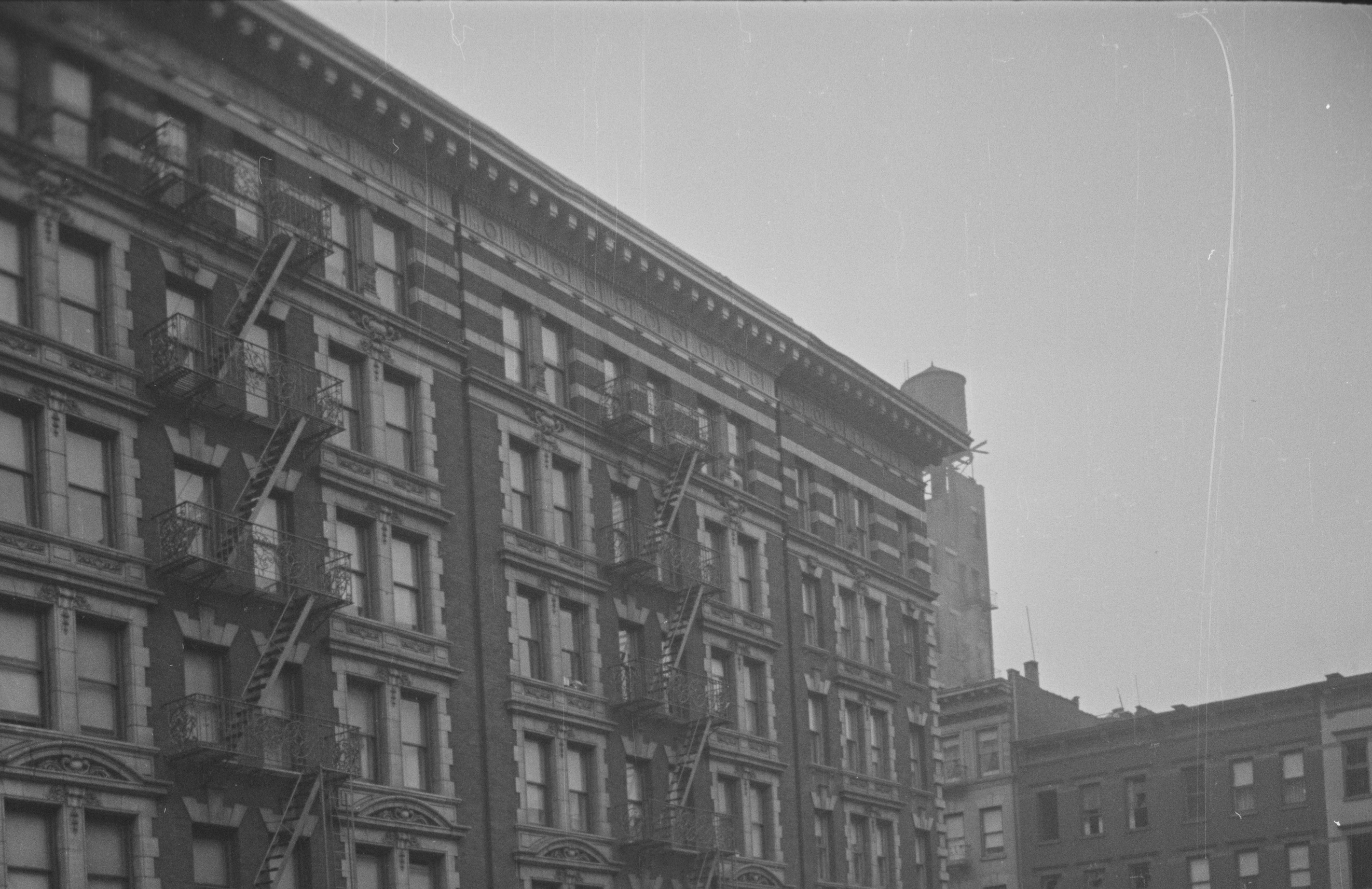
The Richfield, 4 Manhattan Avenue
by Tom Miller
Contractor and builder Robert M. Silverman was just 22 years old when he erected his first substantial building, the De Leon Apartment on West 112th Street, in 1897. By 1904, he had completed many similar buildings and the 29-year-old was still going strong. That year, he broke ground for an ambitious project that would fill the eastern blockfront of Manhattan Avenue from 100th to 101st Streets with four apartment buildings—three on the southern half, and one on the northern portion.
Designed by George F. Pelham, noted for designing apartment buildings, the project was completed in 1905. Each six-story building sat on a base of alternating brick and limestone. Pelham copied the subsequent striated effect at the sixth floor. The Richfield, at 4 Manhattan Avenue, was identical to 6 Manhattan Avenue. Pelham gave them Renaissance detailing in arched pediments and decorated spandrels.
Apartments within the Richfield ranged from 4 to 6 rooms. They became home to middle-class professionals, like Dr. M. Pembroke Congdon, a dental surgeon who graduated from the University of Pennsylvania in 1897; and mechanical engineer Charles H. Sergeant. Ralph Holmes lived here in 1914, when he was appointed assistant of the Bureau of Infectious Diseases of the Manhattan Laboratory at $600 per year (about $19,000 in 2025).
The marriage began to disintegrate shortly after moving into the Richfield.
Among Holmes’s neighbors in the Richfield that year was John Linehan. The young man was the chauffeur of vaudeville star Lew Fields. On the afternoon of July 22, 1914, Fields’s wife, the former Rose Harris, had him drive her to Queens. He was clocked by a patrolman speeding along Queens Boulevard at 55 miles per hour. In court, he told the judge that “he ran it fast because ‘the madam had said to do so when on Long Island,’” according to the Brooklyn Daily Star. Magistrate Fitch fined Linehan $25 (a hefty $785 today) and promised “that he would personally write to the Secretary of State and have his license revoked.”
Marcel and Alberie Pruvot lived here with their children in 1916. Born in France, Marcel was the chef at the famous nightclub and restaurant, Café Savarin, where he earned about $4,700 per month in today’s money. The couple, according to Marcel, had met in France and (scandalously) “lived and cohabited together before marriage.” Marcel arrived in New York City in 1906 and Alberie followed shortly afterward.
The marriage began to disintegrate shortly after moving into the Richfield. According to Marcel in court later, Alberie became “addicted to the excessive use of whiskey, brandy and other intoxicating drinks” and when drunk “becomes very boisterous and uses foul and indecent language in the presence of the children, abuses them by handling them very roughly and calling them vile and indecent names.” He said he was “constantly disgraced and humiliated before the neighbors.”
Alberie, on the other hand, insisted she “has always conducted herself toward [Marcel] as a faithful and obedient wife.” Despite her self-described placid temperament, that was not greeted by Marcel when he returned from work on September 4, 1916. Alberie (according to him), “flew in a rage” and attacked him with a knife. She screamed, “get out of here, you bum and don’t you ever put your foot in my house again.”
When Marcel returned the following day to retrieve his clothing and personal items, the apartment was bare. Alberie had placed all the furnishings in a storage warehouse and he “was left without any clothes and underwear.” Marcel found a room with a family on East 228th Street and on September 16, Alberie and the children returned to the Richfield. She was still here (presumably sipping cocktails) in 1919 when the couple’s messy divorce played out in court.
At 10:00 on the night of July 29, 1928, resident Charles Duarte was heading home on the Sixth Avenue elevated train. A train crashed at full speed into the rear of another, telescoping several of the cars. Rescue parties sifted through the debris, pulling injured passengers from the wreckage. The most critically injured passenger was Charles Duarte, whose right leg was amputated at the New York Hospital. Assistant District Attorney McGowan reported that “the hospital considers Duarte’s condition most critical and that he may die.”
At 10:00 on the night of July 29, 1928, resident Charles Duarte was heading home on the Sixth Avenue elevated train. A train crashed at full speed into the rear of another, telescoping several of the cars.
Born in County Clare, Ireland, S. F. Quinlivan was a devote Catholic. In 1930, his son John P. Quinlivan, was ordained a priest, and on July 4 the following year, The Advocate reported that Rev. Thomas Francis Quinlivan, “newly ordained priest, arrived in New York July 2 on a visit to his father.”
Having a secure, civil service job was comforting during the Depression years, and John Rogers worked as a timekeeper within the Public Works Department. His greed, however, ended that situation. On August 16, 1934, The Sun reported that he and a co-worker had been fired for graft. The two had been extorting $2 each from carpenters and laborers working on a project at the Chrystie Street-Forsythe playground. According to the Commissioner of Public Welfare, they threatened the workers with “being transferred to other projects distant from their homes.”
At some point in the second half of the 20th century, the bracketed cornice was removed, leaving a visible scar. Other than that, the replacement of windows, and the architecturally unsympathetic entrance door, externally, the Richfield has little changed.
Tom Miller is a social historian and blogger at daytoninmanhattan.blogspot.com


